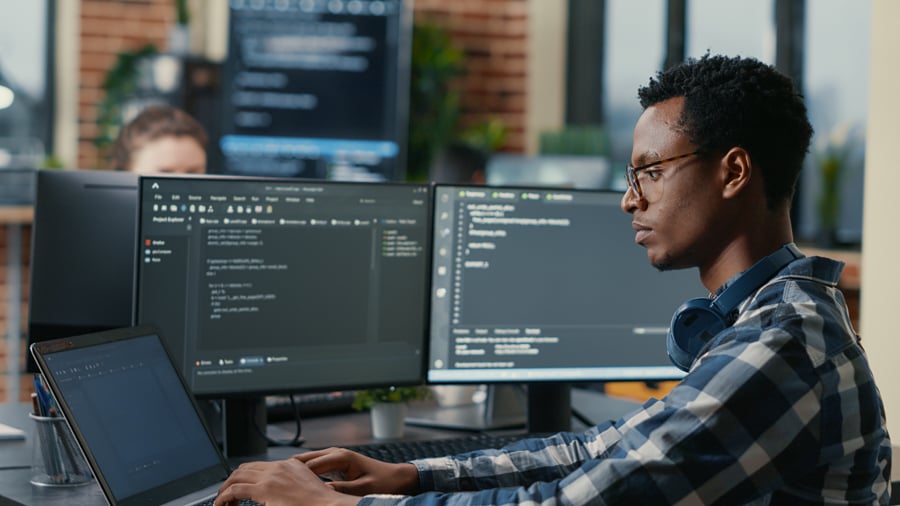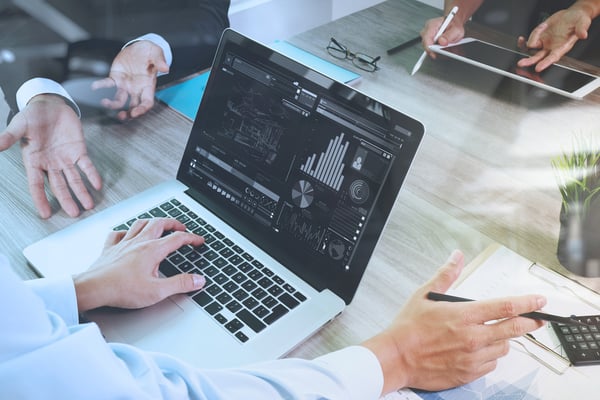Terms like Artificial Intelligence (AI) and Automation are fast becoming the world's favourite buzzwords. While they may seem different at first glance when you take a closer look, AI and Automation share a common foundation.
In this blog post, we explore the connections between AI and Automation, highlighting their similarities and shedding light on how they work together to revolutionise the way we live and work.
Defining AI and Automation: Before diving into their similarities, let's briefly define AI and Automation:
- Artificial Intelligence (AI): AI refers to the simulation of human intelligence in machines that are programmed to learn, reason, and make decisions. It encompasses a broad range of technologies, including machine learning, natural language processing, computer vision, and more. What we as a society consider as being “AI” changes over time and the term is often used to refer to the newest methods for classifying increasingly complex data in a way that mimics human intelligence
- Automation: Automation involves the use of technology to perform tasks or processes with minimal human intervention. It aims to streamline operations, enhance efficiency, and reduce errors by replacing manual actions with automated systems. The technologies used by automation platforms to do this often include AI methods such as machine learning, natural language processing and computer vision to identify objects on screen. More recently, these have increasingly included large language models to help in processing unstructured data which has traditionally been a challenge for automation platforms.
Exploring the Similarities:
- Repetitive and Rule-Based Tasks: Both AI and Automation are designed to handle repetitive and rule-based tasks that were traditionally performed by humans. Whether it's data entry, inventory management, or quality control, AI-powered systems and automated processes excel at executing these tasks with precision and consistency. By taking over these mundane activities, AI and Automation free up human resource for more complex and creative activities.
- Efficiency and Productivity: One of the primary goals of both AI and Automation is to improve efficiency and productivity. AI algorithms can analyse vast amounts of data, identify patterns, and generate insights at a scale and speed beyond human capabilities. Similarly, automation eliminates human errors, reduces processing time, and enables round-the-clock operations. By leveraging AI and Automation, organisations can optimise their workflows, achieve cost savings, and drive business growth.
- Continuous Learning and Adaptability: AI and Automation are not static entities; they are designed to evolve and adapt. AI systems, powered by machine learning algorithms, learn from data and experiences to improve their performance over time. They can identify trends, make predictions, and even adjust their behavior based on changing circumstances. Automation, too, can be programmed to adapt to different scenarios and adjust parameters as needed. This adaptability ensures that AI and automated systems remain relevant and effective in dynamic environments.
- Decision-Making and Problem-Solving: Both AI and Automation play a crucial role in decision-making and problem-solving. AI algorithms can analyse complex data sets, identify correlations, and provide insights to support informed decision-making. Automation systems, on the other hand, can execute predefined decision trees or algorithms, enabling real-time responses to specific events or conditions. Together, AI and Automation enable organisations to make data-driven decisions swiftly and accurately, leading to improved outcomes.
Conclusion: AI and Automation may have their own distinctions, but their shared objectives and underlying principles make them inseparable in today's technological landscape. Both AI and Automation are driven by the pursuit of efficiency, productivity, and improved decision-making, each often relying on the other to achieve its programmed objectives. By leveraging AI's cognitive abilities and Automation's execution capabilities, organizations can unlock unprecedented possibilities across whole functions and industries.
As we move forward, the synergy between AI and Automation will continue to shape our lives and redefine the boundaries of human potential. Harnessing their combined power will enable us to navigate the challenges of the future, unlock new opportunities, and create a world where humans and intelligent machines work hand in hand to drive progress.



